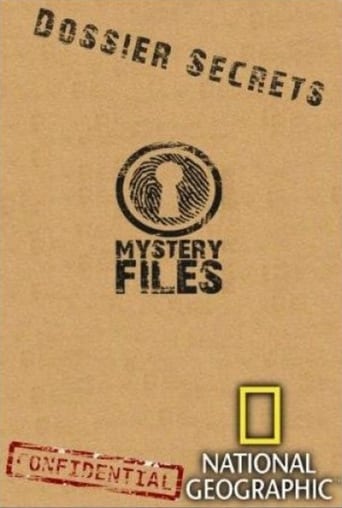

From the Legends of King Arthur and Robin Hood to the recent events of the Russian Revolution, history is full of fascinating and evocative unsolved mysteries. They have inspired, intrigued and often confounded us – but how much do we really know about them? And can we separate fact from fiction? In Mystery Files, the dust is blown off the case files of the world’s most famous and iconic mysteries in a dynamic series that asks, what is the truth behind the greatest stories ever told?
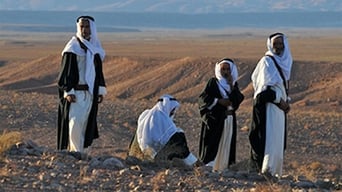
We reveal an ambitious archaeological project in Southern Jordan, which is providing startling new evidence. The Great Arab Revolt Project (GARP) is one of the only archaeological investigations of a battlefield on this scale anywhere in the world. While the archaeological trace of Lawrence and the Bedouin guerrilla fighters is by its very nature incredibly scarce, the military structures of their opponents, the Ottoman Turks, are all too evident. The structures and scars from this battle are visible across the desert, in particular around the city of Ma’an, a key Hejaz station. On-the-ground analysis of surviving defences begins to reveal the style of warfare played out in this military arena.

We reveal an ambitious archaeological project in Southern Jordan, which is providing startling new evidence. The Great Arab Revolt Project (GARP) is one of the only archaeological investigations of a battlefield on this scale anywhere in the world. While the archaeological trace of Lawrence and the Bedouin guerrilla fighters is by its very nature incredibly scarce, the military structures of their opponents, the Ottoman Turks, are all too evident. The structures and scars from this battle are visible across the desert, in particular around the city of Ma’an, a key Hejaz station. On-the-ground analysis of surviving defences begins to reveal the style of warfare played out in this military arena.
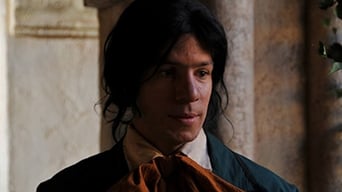
Decades earlier, a popular writer in Mexico, Riva Palacio, was writing stories with a character called El Zorro, and a character called Guillen Lampart. Much of Palacio’s work was published in New York in 1908, where it could have partly inspired Johnston McCulley. Palacio’s fictional character of Lampart was based on meticulous research in to the real-life crime story of Guillen Lombardo from two hundred years earlier, when Mexico was a colony of Spain, and the Catholic world was in the grip of the Inquisition. Modern-day research in to the Inquisitions records reveals an intriguing fact; Lombardo was not Mexican, he was not even Spanish, he was Irish, and his real name was William Lamport. Posing as an aristocrat by day, Lamport was in fact a spy on a mission for the King of Spain. When he arrived in Mexico City he set about starting a revolution to liberate the local Indians from the tyranny of corrupt Spanish rulers. His actions got him arrested by the Inquisition who put him on trial, and from whose prison he made a breakout that would become legend. This programme examines the personal papers of Lamport, it reveals long-hidden reports from the Mexico archives, and investigates the daring prison escape, to open the Mystery Files on Zorro.

Decades earlier, a popular writer in Mexico, Riva Palacio, was writing stories with a character called El Zorro, and a character called Guillen Lampart. Much of Palacio’s work was published in New York in 1908, where it could have partly inspired Johnston McCulley. Palacio’s fictional character of Lampart was based on meticulous research in to the real-life crime story of Guillen Lombardo from two hundred years earlier, when Mexico was a colony of Spain, and the Catholic world was in the grip of the Inquisition. Modern-day research in to the Inquisitions records reveals an intriguing fact; Lombardo was not Mexican, he was not even Spanish, he was Irish, and his real name was William Lamport. Posing as an aristocrat by day, Lamport was in fact a spy on a mission for the King of Spain. When he arrived in Mexico City he set about starting a revolution to liberate the local Indians from the tyranny of corrupt Spanish rulers. His actions got him arrested by the Inquisition who put him on trial, and from whose prison he made a breakout that would become legend. This programme examines the personal papers of Lamport, it reveals long-hidden reports from the Mexico archives, and investigates the daring prison escape, to open the Mystery Files on Zorro.
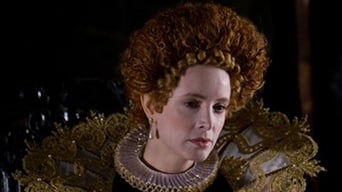
Did Dudley and Elizabeth conspire to murder his wife so that they could be together? By piecing together the staircase in question using old evidence, modern crime scene investigation sheds new light on the age old mystery and suggests that Amy did not die accidentally.

Did Dudley and Elizabeth conspire to murder his wife so that they could be together? By piecing together the staircase in question using old evidence, modern crime scene investigation sheds new light on the age old mystery and suggests that Amy did not die accidentally.

In 1890 newspaper headlines read “Custer’s murderer is dead”. The papers tell of the killing of the man who stood in the way of civilisation. Such is the legend of Sitting Bull: the great chief who defied the US authorities and led the American Indians in the biggest massacre of US soldiers throughout the fight for the west. But this is just one of the myths that have built up around the Battle of Little Bighorn. The battle wasn’t part of an American Indian offensive, but a response to aggression from the US Government. Custer’s men lost thanks to the greater Indian firepower and their guerrilla tactics. Most extraordinary of all, Sitting Bull didn’t murder Custer…he didn’t even take part in the battle. He stayed with the women and children, guiding them to safety.

In 1890 newspaper headlines read “Custer’s murderer is dead”. The papers tell of the killing of the man who stood in the way of civilisation. Such is the legend of Sitting Bull: the great chief who defied the US authorities and led the American Indians in the biggest massacre of US soldiers throughout the fight for the west. But this is just one of the myths that have built up around the Battle of Little Bighorn. The battle wasn’t part of an American Indian offensive, but a response to aggression from the US Government. Custer’s men lost thanks to the greater Indian firepower and their guerrilla tactics. Most extraordinary of all, Sitting Bull didn’t murder Custer…he didn’t even take part in the battle. He stayed with the women and children, guiding them to safety.
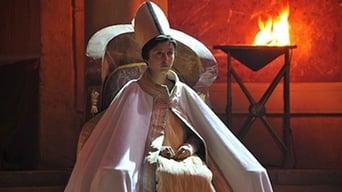
In Rome today is the street known as Vicus Papissa, ‘the street of the woman pope’. In that avenue is an alcove in which it is said an image of Joan once stood, in memory of the spot where she gave birth. The street runs between St Peter’s and the Lateran to the Coliseum and was part of the processional route of all popes in Rome until the 13th Century, when it was suddenly redirected away from the location of Joan’s legendary procession. Some scholars believe that the official route was changed so that the new pope wouldn’t have to pass the notorious site. No contemporary 9th century accounts of a female pope exist, but with no conclusive proof to the contrary, the possibility remains that a talented woman could have risen to become Bishop of Rome? The words of the first writer to account for Joan, Jean de Mailly, resound even more loudly today than they did centuries ago; next to his story of Joan, he wrote the words, ‘to be verified’.

In Rome today is the street known as Vicus Papissa, ‘the street of the woman pope’. In that avenue is an alcove in which it is said an image of Joan once stood, in memory of the spot where she gave birth. The street runs between St Peter’s and the Lateran to the Coliseum and was part of the processional route of all popes in Rome until the 13th Century, when it was suddenly redirected away from the location of Joan’s legendary procession. Some scholars believe that the official route was changed so that the new pope wouldn’t have to pass the notorious site. No contemporary 9th century accounts of a female pope exist, but with no conclusive proof to the contrary, the possibility remains that a talented woman could have risen to become Bishop of Rome? The words of the first writer to account for Joan, Jean de Mailly, resound even more loudly today than they did centuries ago; next to his story of Joan, he wrote the words, ‘to be verified’.

His conviction may not be unjust but it is perhaps unfair and certainly unlucky. Kidd’s actions at sea clearly made the full use of the legal grey area that privateering occupied, an area that many men took advantage of, and most without feeling the full force of the Old Bailey tightening around their necks.

His conviction may not be unjust but it is perhaps unfair and certainly unlucky. Kidd’s actions at sea clearly made the full use of the legal grey area that privateering occupied, an area that many men took advantage of, and most without feeling the full force of the Old Bailey tightening around their necks.
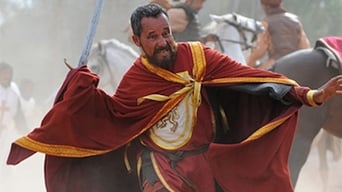
Through the accounts and diaries of Saladin’s closest advisers, the mysteries of the period are uncovered. Saladin’s fear at the imminent arrival of Richard and the opening of the Third Crusade, his indecision at the Siege of Acre and his failure to ensure the safe release of 3000 Muslim prisoners all paint a picture of a more complex man. Debunking many of the myths of the Crusades, and showing how the war changed both Saladin and Richard the Lionheart, leading them both to question the massive death toll of the conflict. In Saladin’s last days in Damascus, his spirit sapped by war, and of his last words, a denunciation of blood-shed.

Through the accounts and diaries of Saladin’s closest advisers, the mysteries of the period are uncovered. Saladin’s fear at the imminent arrival of Richard and the opening of the Third Crusade, his indecision at the Siege of Acre and his failure to ensure the safe release of 3000 Muslim prisoners all paint a picture of a more complex man. Debunking many of the myths of the Crusades, and showing how the war changed both Saladin and Richard the Lionheart, leading them both to question the massive death toll of the conflict. In Saladin’s last days in Damascus, his spirit sapped by war, and of his last words, a denunciation of blood-shed.
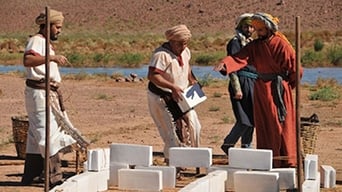
Newton was convinced that he alone had been given a gift to unravel the mysteries of the Universe, whether through science, religion or alchemy, and maintained an unrivaled cloak of secrecy over all three. But there must have been something that Newton was especially desperate to keep secret - taking it with him to the Grave. He burned boxfuls of papers just weeks before his death. What could he have been so desperate to destroy? Modern psychiatrists now suggest that this act, along with many of his other characteristics were driven by Asperger’s Syndrome and that in fact, he was the most classic case of Asperger’s Syndrome in history.

Newton was convinced that he alone had been given a gift to unravel the mysteries of the Universe, whether through science, religion or alchemy, and maintained an unrivaled cloak of secrecy over all three. But there must have been something that Newton was especially desperate to keep secret - taking it with him to the Grave. He burned boxfuls of papers just weeks before his death. What could he have been so desperate to destroy? Modern psychiatrists now suggest that this act, along with many of his other characteristics were driven by Asperger’s Syndrome and that in fact, he was the most classic case of Asperger’s Syndrome in history.

Throughout the seventeenth Century several European travelers visit the Taj Mahal. Many of these explorers later publish lengthy volumes of their adventures. Only 10 years after the emperor’s death, the French traveller, Jean Baptiste Tavernier, publishes a travelogue of his adventures in India, mentioning an uncompleted mausoleum across the river from the Taj Mahal. The story spreads and other writers across the centuries state it as fact. In the mid-1990s, excavators’ uncover the remnants of a garden are found with the exact dimensions to that of the garden of the Taj Mahal. Black stones are also found. Are these the remains of the Taj Mahal’s fabled sister building?

Throughout the seventeenth Century several European travelers visit the Taj Mahal. Many of these explorers later publish lengthy volumes of their adventures. Only 10 years after the emperor’s death, the French traveller, Jean Baptiste Tavernier, publishes a travelogue of his adventures in India, mentioning an uncompleted mausoleum across the river from the Taj Mahal. The story spreads and other writers across the centuries state it as fact. In the mid-1990s, excavators’ uncover the remnants of a garden are found with the exact dimensions to that of the garden of the Taj Mahal. Black stones are also found. Are these the remains of the Taj Mahal’s fabled sister building?
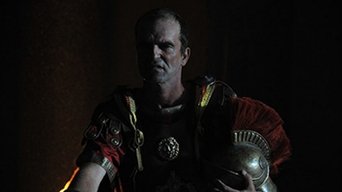
After his death, his body became one of the most sacred objects in history. Pilgrims, from the common man to the most powerful emperors, visited and knelt before the remains of their god-King. And then in the space of a generation, all trace of his tomb simply disappeared. What happened to Alexander’s body? Was it destroyed by a tsunami? Did Christians intent on stamping out all trace of other religions destroy it? Or, as one historian believes, does it still exist, renamed and venerated as a saint in one of the most glorious Christian basilicas in the world? With no archaeological evidence indicating the location of the lost tomb we are forced to examine ancient eyewitness accounts of people who visited the tomb and place it in Alexandria.

After his death, his body became one of the most sacred objects in history. Pilgrims, from the common man to the most powerful emperors, visited and knelt before the remains of their god-King. And then in the space of a generation, all trace of his tomb simply disappeared. What happened to Alexander’s body? Was it destroyed by a tsunami? Did Christians intent on stamping out all trace of other religions destroy it? Or, as one historian believes, does it still exist, renamed and venerated as a saint in one of the most glorious Christian basilicas in the world? With no archaeological evidence indicating the location of the lost tomb we are forced to examine ancient eyewitness accounts of people who visited the tomb and place it in Alexandria.
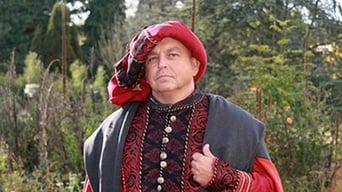
We reveal that despite the book suggesting he spent 20 years in the court of the Chinese emperor, there is no mention of Marco in Chinese records. Marco Polo’s last will and testament remains unsigned and even the inventory of his possessions made on his death has question marks hanging over it. Our experts examine all the best evidence. Did Marco Polo, or any European, travel so far into China so long ago? Are the famous tales really based on Marco Polo’s travels? And did a man named Marco Polo even exist?

We reveal that despite the book suggesting he spent 20 years in the court of the Chinese emperor, there is no mention of Marco in Chinese records. Marco Polo’s last will and testament remains unsigned and even the inventory of his possessions made on his death has question marks hanging over it. Our experts examine all the best evidence. Did Marco Polo, or any European, travel so far into China so long ago? Are the famous tales really based on Marco Polo’s travels? And did a man named Marco Polo even exist?

This programme analyzes the very latest neurological research into Shell Shock and trauma, it retraces Hitler’s time as a frontline soldier, and examines the medical history of Hitler’s gas poisoning and his period at a psychiatric wartime hospital that the Nazi Party later tried to cover-up; and it explores an American top-secret report from 1943 to discover how Hitler’s war experiences led to him suffering what some historians believe to be an extreme psychological disorder, Hysterical Blindness, known today as Conversion Disorder.

This programme analyzes the very latest neurological research into Shell Shock and trauma, it retraces Hitler’s time as a frontline soldier, and examines the medical history of Hitler’s gas poisoning and his period at a psychiatric wartime hospital that the Nazi Party later tried to cover-up; and it explores an American top-secret report from 1943 to discover how Hitler’s war experiences led to him suffering what some historians believe to be an extreme psychological disorder, Hysterical Blindness, known today as Conversion Disorder.
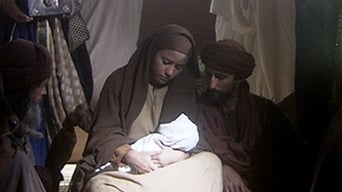
In fact only two of the four accounts of the life of Christ in the New Testament, the Gospel of Luke and the Gospel of Matthew, tell of his birth. These Infancy Gospels, as they are known, both agree that Jesus was born in Bethlehem and today pilgrims and tourists mill in their thousands around the Church of the Nativity built upon the supposed site of Christ’s entry into the world, just as they have for centuries. But only Luke mentions the Census and the journey from Nazareth. Neither mentions the ox or the ass. The visitors from the east are nowhere referred to as Kings and nor is it mentioned that there are three of them. Both Gospels mention King Herod, but his dates do not correspond with the dates of a possible Roman census under the Governor Quirinus mentioned in Luke, which came ten years after Herod the Great’s death. And what census, then or now, would take you away from your main residence to be counted in a town which you or your ancestors have long since left? We reveal that even though we assume that Joseph is present at the birth of Christ, this is not mentioned in any of the gospels. In fact according to purification laws outlined in the Temple Scroll and in the book of Leviticus, under Jewish law the only people that may have been present at the birth would in fact have been women. With help from leading academics, archaeologists and Jewish and Christian theologians, we visit many of the locations mentioned in the Gospels to place the birth of Christ in its historical, cultural and Jewish and early Christian contexts and piece together the real story of The Nativity.

In fact only two of the four accounts of the life of Christ in the New Testament, the Gospel of Luke and the Gospel of Matthew, tell of his birth. These Infancy Gospels, as they are known, both agree that Jesus was born in Bethlehem and today pilgrims and tourists mill in their thousands around the Church of the Nativity built upon the supposed site of Christ’s entry into the world, just as they have for centuries. But only Luke mentions the Census and the journey from Nazareth. Neither mentions the ox or the ass. The visitors from the east are nowhere referred to as Kings and nor is it mentioned that there are three of them. Both Gospels mention King Herod, but his dates do not correspond with the dates of a possible Roman census under the Governor Quirinus mentioned in Luke, which came ten years after Herod the Great’s death. And what census, then or now, would take you away from your main residence to be counted in a town which you or your ancestors have long since left? We reveal that even though we assume that Joseph is present at the birth of Christ, this is not mentioned in any of the gospels. In fact according to purification laws outlined in the Temple Scroll and in the book of Leviticus, under Jewish law the only people that may have been present at the birth would in fact have been women. With help from leading academics, archaeologists and Jewish and Christian theologians, we visit many of the locations mentioned in the Gospels to place the birth of Christ in its historical, cultural and Jewish and early Christian contexts and piece together the real story of The Nativity.
From the Legends of King Arthur and Robin Hood to the recent events of the Russian Revolution, history is full of fascinating and evocative unsolved mysteries. They have inspired, intrigued and often confounded us – but how much do we really know about them? And can we separate fact from fiction? In Mystery Files, the dust is blown off the case files of the world’s most famous and iconic mysteries in a dynamic series that asks, what is the truth behind the greatest stories ever told?